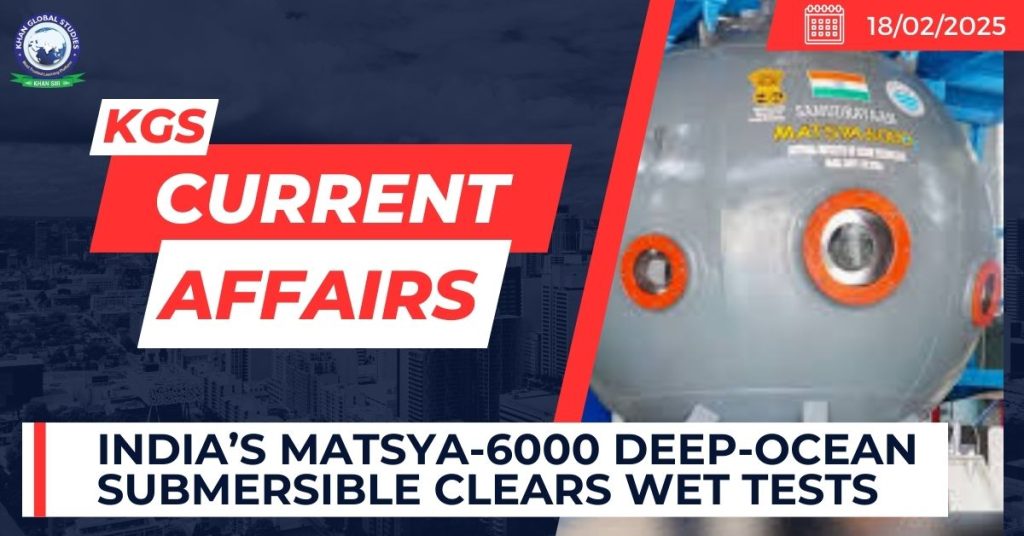Context:
Recently, the Matsya-6000 Deep-Ocean Submersible has successfully completed its wet testing at the harbour.
More on the news:
- Although the restricted water depth in the harbour hindered underwater voice communication, the wet test conducted confirmed that Matsya-6000 is on track for future demonstrations in deeper waters.
- The successful completion of the test at Kattupalli Port has raised confidence that the submersible will be ready for shallow-water demonstrations at depths of up to 500 meters by the end of 2025.
What are Deep Ocean Mission (DOM) and Samudrayan Project and how are they linked to Matsya-6000?
- Deep Ocean Mission (DOM) is an ambitious initiative of the Ministry of Earth Sciences (MoES).
- The mission aims to develop technologies to harness living and non-living resources from the deep oceans.
- The DOM has six components, one of which is the Development of Technologies for Deep Sea Mining, Manned Submersible, and Underwater Robotics.
- To implement this component, the government has launched the Samudrayaan project as a sub-project under the Deep Ocean Mission.
- Under the Samudrayan Project, The National Institute of Ocean Technology (NIOT) has led to the development of the 4th Generation deep-ocean human scientific submersible, named “Matsya-6000”.
What is wet test for a submersible and why is it important?
- There are two types of tests conducted for a submersible viz. dry and wet test. The difference between the two lies in the presence or absence of moisture during the testing.
- The wet test aims to evaluate the performance of the deep-submergence vehicle under real underwater conditions.
- During the wet testing phase, the submersible’s power and control networks, flotation, stability, and human safety systems were evaluated.
- The successful completion of the wet test is considered important to proceed further to other stages of the Samudrayan project.
- The successful completion will be followed by other tests which include a shallow-water test planned for 2025 and an unmanned deep-sea test in 2026.
Key Features of Matsya-6000
- Matsya-6000 features a 2.1-meter diameter spherical hull, specifically designed to accommodate three individuals.
- This compact yet robust structure is designed for deep-ocean exploration and research.
Technology & Subsystems:
- The submersible is equipped with advanced subsystems such as a main ballast system for diving, thrusters for multidirectional movement, a battery bank for power, and syntactic foam for buoyancy.
- The system also includes state-of-the-art power distribution networks, control hardware and software, and advanced underwater navigation devices.
- Communication systems include an acoustic modem, underwater telephone, and VHF radio, supplemented by underwater acoustic positioning and GPS to track the surface location precisely.
The submersible integrates sophisticated life-support systems to monitor environmental conditions, providing essential support for the crew during operations.
The submersible is also fitted with oceanographic sensors and underwater cameras that are crucial for data collection during deep-sea research.

